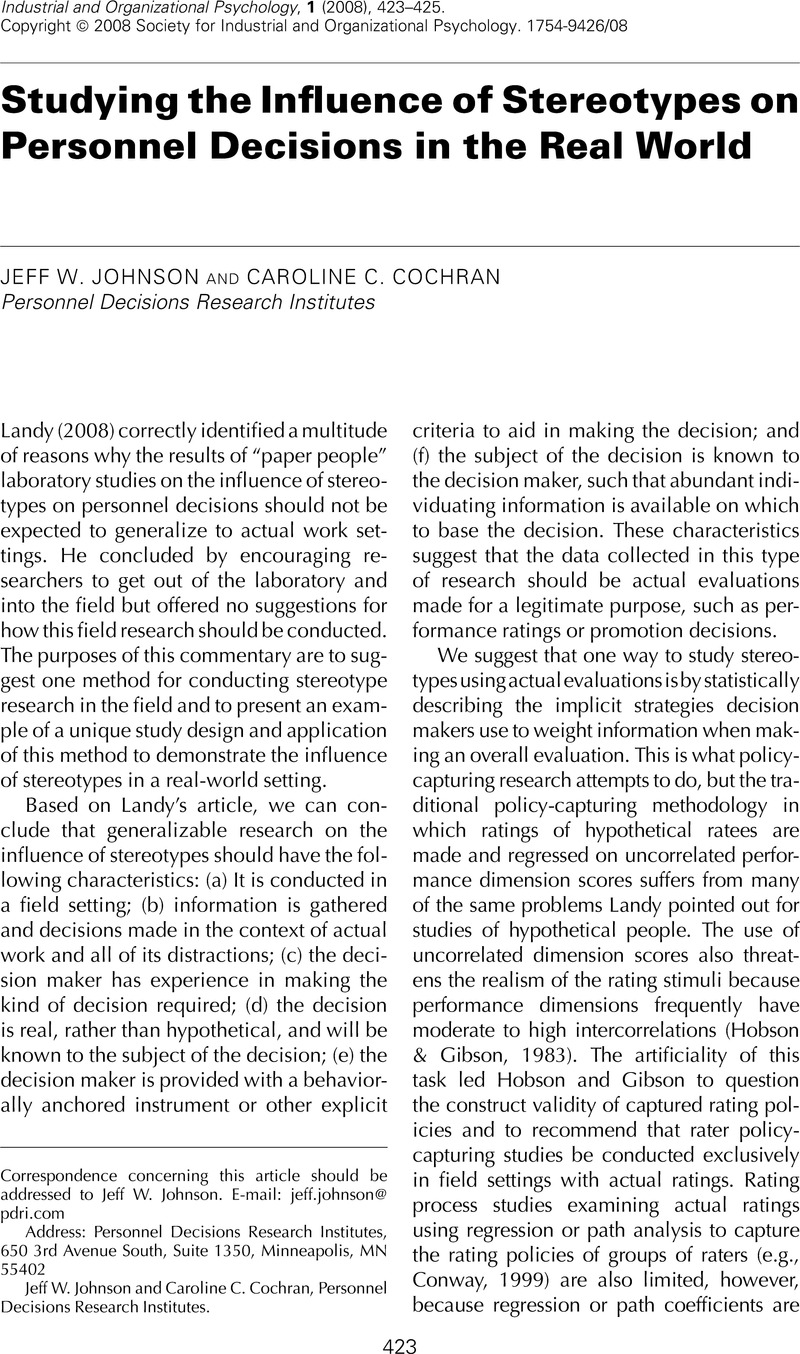Crossref Citations
This article has been cited by the following publications. This list is generated based on data provided by Crossref.
Landy, Frank J.
2008.
Stereotyping, Implicit Association Theory, and Personnel Decisions: I Guess We Will Just Have to Agree to Disagree.
Industrial and Organizational Psychology,
Vol. 1,
Issue. 4,
p.
444.
JOHNSON, JEFF W.
and
CARTER, GARY W.
2010.
VALIDATING SYNTHETIC VALIDATION: COMPARING TRADITIONAL AND SYNTHETIC VALIDITY COEFFICIENTS.
Personnel Psychology,
Vol. 63,
Issue. 3,
p.
755.
HIRSCHFELD, ROBERT R.
and
THOMAS, CHRISTOPHER H.
2011.
AGE‐ AND GENDER‐BASED ROLE INCONGRUENCE: IMPLICATIONS FOR KNOWLEDGE MASTERY AND OBSERVED LEADERSHIP POTENTIAL AMONG PERSONNEL IN A LEADERSHIP DEVELOPMENT PROGRAM.
Personnel Psychology,
Vol. 64,
Issue. 3,
p.
661.
Murphy, Kevin R
DeNisi, Angelo S
and
Wang, Mo
2022.
Do Age Stereotypes Predict Personnel Decisions? The State of the Evidence.
Work, Aging and Retirement,
Vol. 8,
Issue. 4,
p.
323.





